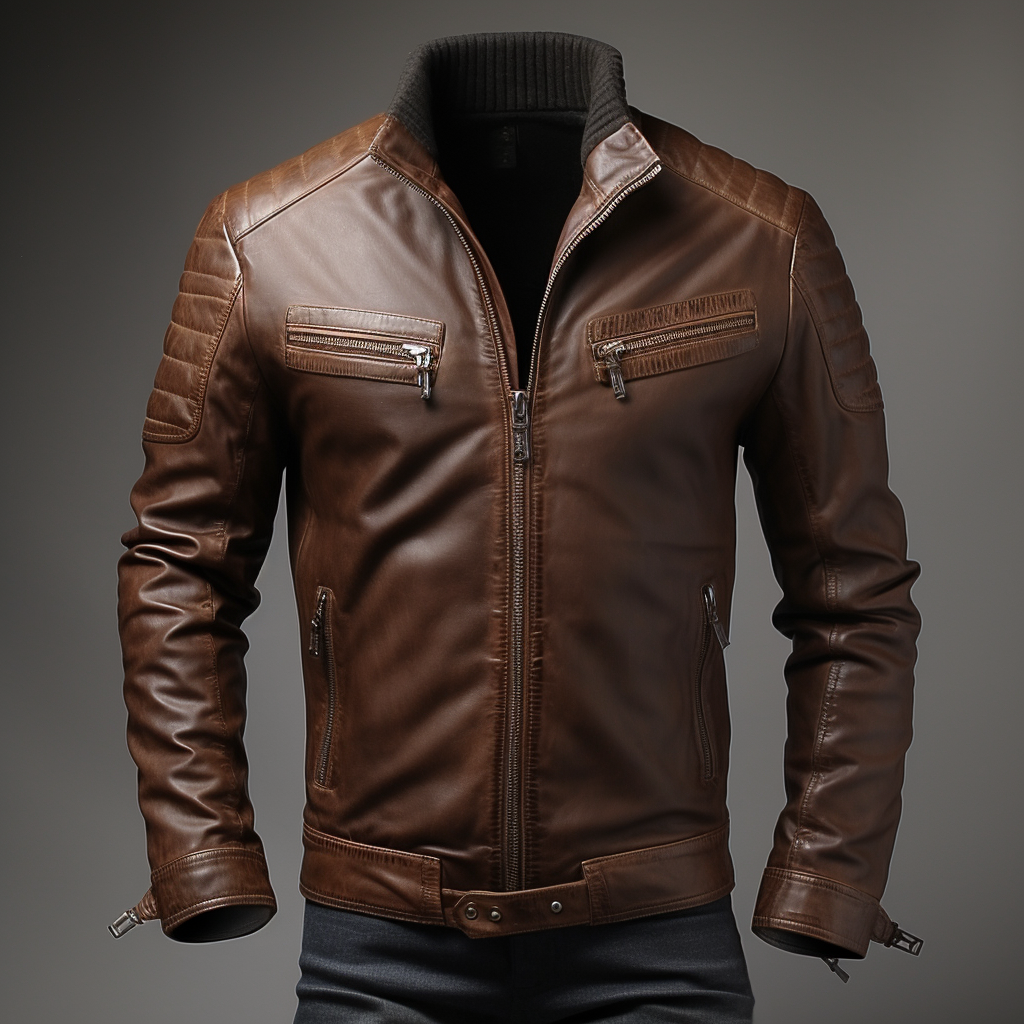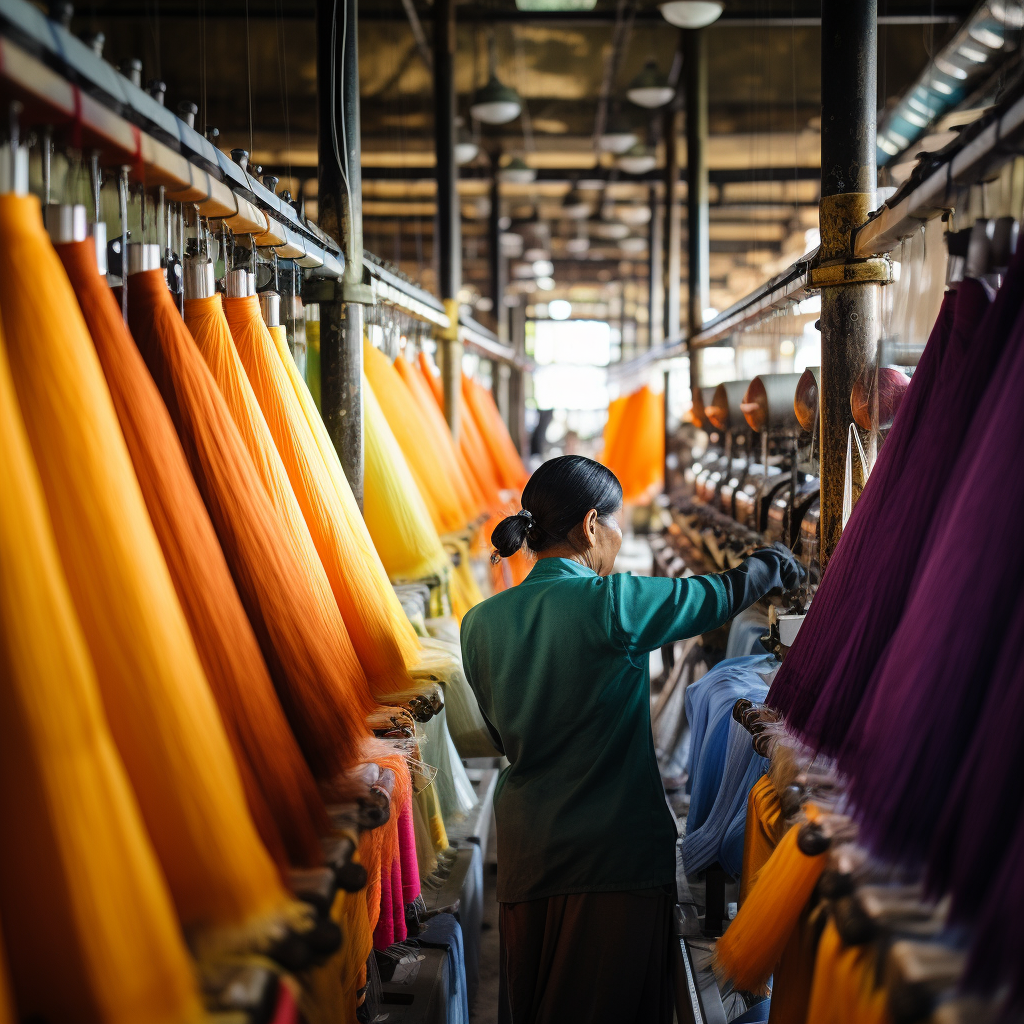Unraveling Authentic Leather Jackets: A Comprehensive Guide
When it comes to iconic fashion staples, few items stand the test of time quite like a leather jacket. From the silver screen's leading ladies and gentlemen to everyday fashion enthusiasts, leather jackets remain a perennial favorite, with their effortless combination of style, durability, and warmth. But not all leather jackets are created equal. The mark of a truly authentic leather jacket lies in the craftsmanship, material, and the brand's commitment to quality.
In this comprehensive guide, we're diving deep into the world of leather jackets. We'll unravel the fascinating history and evolution of this wardrobe classic, explore what makes a leather jacket genuinely authentic, and delve into the intricate process of making one. We'll also spotlight some of the top authentic clothing companies globally that are renowned for their premium leather jackets.
Whether you're in the market for a new leather jacket or just passionate about fashion, we're sure this in-depth exploration will enrich your understanding and appreciation for these enduring style icons. So buckle up and get ready for an enlightening journey through the realm of authentic leather jackets!

History and Evolution of Leather Jackets
Leather jackets have a rich and intriguing history, weaving their way through various cultural movements, fashion trends, and practical uses over the decades.
2.1. Early Origins
The earliest use of leather jackets can be traced back to the early 1900s when they were worn primarily for practical and protective purposes. During World War I, pilots and military personnel wore leather flight jackets due to their durability and ability to withstand harsh conditions. The most notable of these was the 'Bomber Jacket,' which offered warmth at high altitudes.
2.2. Pop Culture Influence
In the 1950s, leather jackets took a fashionable turn, largely propelled by Hollywood's influence. Marlon Brando's rebellious image in "The Wild One" (1953) and James Dean in "Rebel Without a Cause" (1955) made the leather jacket a symbol of youth and rebellion.
2.3. The Punk Rock Era
The punk rock era of the 1970s and '80s saw leather jackets becoming synonymous with counterculture. Bands like The Ramones and Sex Pistols sported leather jackets, leading them to become emblematic of the punk scene.
2.4. High Fashion Adoption
By the late 20th century, the leather jacket had made its way into high fashion, with top designers such as Yves Saint Laurent and Gianni Versace introducing them into their collections. This cemented the leather jacket's place in fashion as an enduring, versatile piece adaptable to various styles and occasions.
2.5. Contemporary Trends
Today, leather jackets continue to be a wardrobe staple, with styles ranging from classic to modern, edgy to understated. They've transcended seasonal trends to become a timeless piece, holding onto their allure of rebellion and freedom.
Authenticity in Leather Jackets: How to Spot the Genuine Article
The market is brimming with leather jackets of all types, from bargain buys to high-end designer pieces. Not all are authentic, however. Genuine leather jackets are more than just a fashion statement. They're an investment, showcasing exceptional quality and longevity if properly cared for. But how can you tell a genuine leather jacket from a knockoff?
3.1. Material
Authentic leather jackets are typically made from full-grain or top-grain leather. Full-grain leather is the highest quality leather, as it retains all the natural markings and texture of the animal hide. Top-grain leather is the second-highest quality and has been buffed and polished to remove imperfections.
3.2. Craftsmanship
The craftsmanship of a leather jacket is a significant indicator of its authenticity. Look for jackets with sturdy, even stitching, high-quality hardware, and a well-fitted lining. Genuine leather jackets often have a heft to them, showcasing the quality of the material and construction.
3.3. Price
While not always the case, the price of a leather jacket can provide insight into its authenticity. Genuine leather jackets require high-quality materials and skilled labor, factors that typically result in a higher price point.
3.4. Smell and Feel
Genuine leather has a distinct smell that cannot be replicated by synthetic materials. Additionally, real leather will have a soft, flexible feel. Faux leather jackets often feel plastic-like and rigid.
3.5. Brand Reputation
Finally, consider the brand's reputation. Companies with a long history of producing leather jackets and a commitment to quality and sustainability are more likely to offer authentic products.

The Process of Making a Leather Jacket
Creating an authentic leather jacket is an intricate and time-consuming process that requires expertise and precision. From sourcing the right leather to the final touches, each stage contributes significantly to the quality, appearance, and longevity of the jacket.
4.1. Sourcing the Leather
The journey of a leather jacket starts with the selection of the right leather. Top-quality full-grain or top-grain leather is typically chosen due to its durability and texture. The quality and condition of the hide are paramount; it should be free of scars and blemishes.
4.2. Tanning Process
The hides then undergo a tanning process to convert them into durable and non-perishable leather. There are various methods of tanning, each impacting the leather's characteristics. Chrome tanning and vegetable tanning are the most popular methods, each offering a different finish and feel to the leather.
4.3. Dyeing and Finishing
After tanning, the leather is dyed to give it the desired color. It may then be finished to achieve various effects, such as a polished, distressed, or matte look. This stage significantly influences the jacket's final aesthetic.
4.4. Cutting and Assembly
The finished leather is cut into specific patterns based on the jacket design. This process requires immense precision, as any mistakes cannot be undone. The cut pieces are then assembled, usually sewn together, to form the jacket.
4.5. Adding Details
The final step involves adding the details – hardware like zippers and buttons, pockets, lining, and any design elements like embroidery or patches. These details can make or break a jacket's overall look, adding to its authenticity and uniqueness.
Understanding this complex process underscores the value and worth of an authentic leather jacket. It's not just a piece of clothing, but a labor of love, craftsmanship, and dedication.
Top Authentic Clothing Companies Making Leather Jackets
While many brands offer leather jackets, only a few have earned a reputation for their commitment to authenticity, quality, and craftsmanship. Let's explore five such authentic clothing companies renowned for their top-notch leather jackets.
5.1. Schott NYC
Founded in 1913, Schott NYC is a family-owned business renowned for its leather jackets. Their most famous offering, the Perfecto motorcycle jacket, became an icon of rebellious style after Marlon Brando wore it in "The Wild One". Schott NYC's commitment to quality materials, expert craftsmanship, and timeless design ensures their leather jackets remain sought-after pieces globally.
5.2. AllSaints
AllSaints, a British fashion retailer established in 1994, has made its mark with contemporary, edgy designs. Their leather jackets, particularly their biker styles, are favorites among fashion enthusiasts. Crafted from high-quality leather, these jackets perfectly blend traditional craftsmanship with modern aesthetics.
5.3. Belstaff
Belstaff, founded in 1924, is a modern British heritage brand celebrated for its leather jackets that exude a sense of adventure. Belstaff jackets are designed for durability and practicality without compromising on style, making them a favored choice for both urban dwellers and lovers of the great outdoors.
5.4. The Real McCoy’s
Japanese brand The Real McCoy's is dedicated to reproducing clothing from the mid-20th century with meticulous detail. Their leather jackets, inspired by military and aviation styles of the past, are crafted with an uncompromising commitment to authenticity and quality.
5.5. Aero Leather Clothing Co.
Aero Leather Clothing Co., a Scottish company founded in 1981, is famous for its historically accurate reproductions of vintage leather jackets. Known for their use of top-quality horsehide and traditional production methods, Aero's jackets are a testament to the brand's dedication to authenticity and quality.
Each of these brands showcases the hallmarks of authentic leather jackets: quality materials, exceptional craftsmanship, and timeless design. They serve as excellent examples of what to look for when shopping for a genuine leather jacket.
How to Choose the Perfect Leather Jacket for You
Purchasing an authentic leather jacket is a significant investment, one that should serve you well for many years. Therefore, choosing the perfect one can seem daunting. Here are some factors to consider to help you make the right decision.
6.1. Style
Leather jackets come in several styles, including bomber, biker, field, and racer. Each style has its unique characteristics and aesthetic. Your choice should reflect your personal style and how you plan to use the jacket.
6.2. Fit
An excellent fit is crucial. The jacket should feel snug but not tight, with enough room to layer a sweater underneath. The sleeves should end just at your wrists, and the length should hit right at your waist or hips, depending on the jacket's style.
6.3. Quality of Leather
As we've discussed, full-grain or top-grain leather is the highest quality. The leather should feel soft and supple to the touch, not stiff or plasticky.
6.4. Craftsmanship
Inspect the jacket for signs of good craftsmanship: smooth, straight stitching; high-quality hardware; and a well-fitted, sturdy lining.
6.5. Brand
Consider buying from a reputable brand known for its quality and commitment to authenticity. They may be pricier, but the investment is worth it for a jacket that will last.
6.6. Care and Maintenance
Ensure you're prepared for the care and maintenance that an authentic leather jacket requires. This includes regular conditioning to keep the leather supple and professional cleaning when necessary.
Remember, a leather jacket is not just a purchase; it's an investment. By considering these factors, you'll be able to find a jacket that you'll love and wear for years to come.

How to Maintain and Care for Your Leather Jacket
Once you've invested in an authentic leather jacket, it's essential to take proper care of it to preserve its appearance and longevity. Here's a guide to maintaining and caring for your leather jacket:
7.1. Cleaning
Avoid cleaning your leather jacket at home. Instead, rely on professional leather cleaners who are experienced in handling this delicate material. If you need to deal with a minor spill or stain, gently wipe it off with a damp cloth.
7.2. Conditioning
Leather jackets need to be conditioned regularly to prevent them from drying out and cracking. Use a high-quality leather conditioner every few months or when you notice the leather becoming dry. Apply the conditioner sparingly and buff with a soft cloth.
7.3. Storing
Store your jacket in a cool, dry place away from direct sunlight, which can fade and damage the leather. Use a wide, padded hanger to maintain the jacket's shape and prevent stretching. Never store a leather jacket in plastic, as it needs to breathe.
7.4. Weather Protection
While leather is a durable material, it's not invincible. Avoid wearing your jacket in heavy rain, which can stain and warp the leather. If your jacket does get wet, let it air dry naturally away from direct heat sources.
7.5. Avoiding Damage
Keep sharp objects away from your jacket to prevent accidental scratches or punctures. Remember, the leather is essentially skin, and once damaged, it cannot heal.
7.6. Regular Checks
Inspect your jacket regularly for signs of wear and tear. Early detection can help prevent minor issues from becoming major problems.
Following these tips can help ensure your leather jacket remains in top-notch condition for years, allowing you to fully enjoy the investment you've made in this timeless wardrobe staple.
Conclusion
Leather jackets have long been a symbol of rebellious style, adventurous spirit, and sophisticated elegance. They've endured as a fashion staple, their appeal unfazed by the ebb and flow of trends. Authentic leather jackets, with their superior materials, craftsmanship, and design, are more than just garments. They're investments, pieces of wearable art that can last a lifetime with proper care.
This guide aimed to navigate you through the rich history and evolution of leather jackets, the complex process of creating them, and how to identify authentic ones. It showcased reputable brands known for their commitment to authenticity, quality, and craftsmanship. It also guided you in choosing the perfect leather jacket and caring for it to preserve its beauty and longevity.
Remember, a genuine leather jacket isn't just about aesthetics or making a fashion statement. It's a testament to the value of investing in quality, the beauty of expert craftsmanship, and the enduring appeal of timeless style. When chosen with care and maintained properly, a leather jacket can be a cherished piece that complements your wardrobe and personal style for years, perhaps even decades, to come.

FAQs
Q1: How can I tell if a leather jacket is authentic?
Authentic leather jackets are typically made from high-quality full-grain or top-grain leather. They exhibit high craftsmanship, have a unique smell, and feel soft to the touch. The price point can also be an indicator as genuine leather jackets usually come at a higher cost due to quality materials and labor.
Q2: How should a leather jacket fit?
A leather jacket should fit snugly but not tight. There should be enough room to layer a sweater underneath. The sleeves should end at your wrists, and the jacket should hit at your waist or hips.
Q3: How do I take care of my leather jacket?
Care for your leather jacket includes professional cleaning, regular conditioning, proper storage away from sunlight, and protecting it from harsh weather. Avoid damage by keeping sharp objects away, and check regularly for signs of wear and tear.
Q4: What is the best leather for a jacket?
Full-grain leather is the highest quality leather used for jackets, known for its durability and unique texture. Top-grain leather is also a good option, offering high quality but with a smoother appearance as it has been buffed and polished to remove imperfections.



评论
发表评论